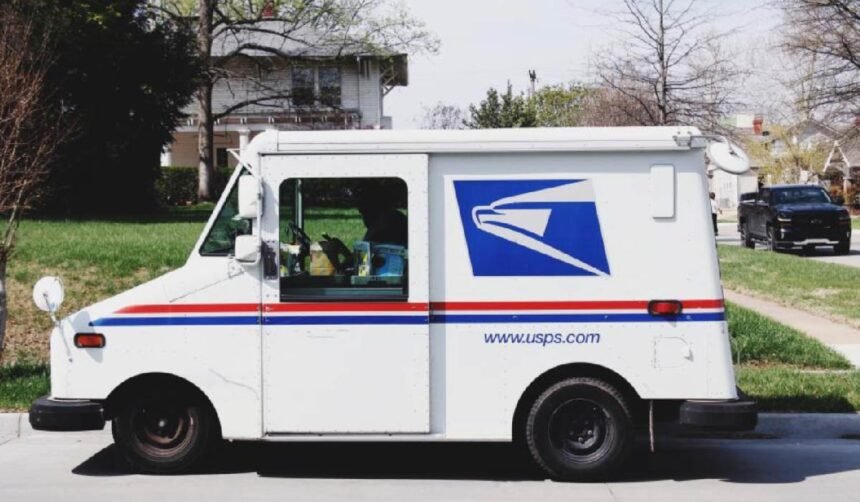In an increasingly digitized world, the power of physical mail still holds a strong presence. Whether it’s direct mail marketing, business correspondence, or parcel shipping, millions of items journey through the postal system every day. But have you ever wondered what happens behind the scenes—how your mail gets from Point A to Point B, or why some packages arrive faster than others? A large part of the answer lies in the efficiency of a mail house and the inner workings of transit USPS systems.
Understanding these terms and their roles can make a world of difference for businesses aiming to streamline their communications or improve delivery reliability. In this blog post, we’ll dive deep into the intricacies of mail houses, how they collaborate with the United States Postal Service (USPS), and what you should know about the “in transit” process.
What is a Mail House?
A mail house, also known as a mailing house or letter shop, is a business that specializes in preparing large volumes of mail for distribution. These organizations take on tasks like printing, folding, inserting, addressing, and sorting mail for their clients. Instead of a company handling these time-consuming and often complicated logistics internally, they outsource to a mail house that has the tools, staff, and expertise to manage it efficiently.
Mail houses often work with both commercial and non-commercial entities including:
- Marketing agencies
- Government bodies
- Educational institutions
- E-commerce businesses
- Non-profits
The core value they provide is the seamless execution of mass mailings. They are particularly beneficial for direct mail marketing campaigns that demand both personalization and timely delivery. A competent mail house ensures that each piece of mail reaches the correct recipient in the most cost-effective and punctual way possible.
Why Use a Mail House?
Companies that regularly send out large volumes of mail can reap significant benefits from using a mail house. Some of the most notable advantages include:
1. Time Efficiency
Preparing hundreds or thousands of mail pieces can take up valuable time and resources. A mail house automates much of this process using high-speed printing and sorting machinery, significantly cutting down on preparation time.
2. Cost Savings
Mail houses can access bulk postage rates and discounts that are typically not available to individual businesses. They also minimize waste and errors, which can lead to further cost reductions.
3. Data Accuracy
One of the biggest issues businesses face with direct mail is outdated or inaccurate address information. Mail houses offer data hygiene services—cleaning and verifying mailing lists to ensure each mail piece reaches the correct destination.
4. Compliance and Regulation
Mail houses are well-versed in postal regulations. Whether it’s formatting addresses or choosing the correct postage class, they help you stay compliant and avoid penalties or delivery delays.
The Role of USPS in Mail Delivery
The United States Postal Service (USPS) is the federal agency responsible for mail collection and delivery across the country. It operates one of the largest and most complex logistics networks in the world. USPS handles approximately 421.4 million mail pieces per day (as of 2024), ranging from letters and flyers to packages and large parcels.
When businesses partner with a mail house, the prepared mail is typically handed off to USPS for the final stage of delivery. Understanding how your mail travels through USPS during this stage is crucial to optimizing your mailing strategy.
What Does “In Transit USPS” Mean?
You’ve probably seen the status “In Transit USPS” when tracking a package or letter. But what does it really mean?
Simply put, the “in transit” status means that your mail item has been accepted by USPS and is currently on its way to the recipient. However, this stage can involve multiple steps and locations:
- Sorting Facility Arrival: The mail arrives at a regional USPS distribution center.
- Inter-Facility Movement: It may be transferred between multiple facilities depending on the delivery route.
- Out for Delivery: Finally, the mail reaches the local post office and is placed on a delivery vehicle.
Each of these steps introduces the potential for delays or rerouting. If a package remains in the “in transit” status for a prolonged period, it could indicate a backlog, incorrect address, or other delivery complication.
Understanding transit USPS statuses can help businesses manage customer expectations and make informed decisions about when and how to send important mail.
How Mail Houses and USPS Work Together
Mail houses and USPS share a symbiotic relationship. A mail house ensures that the mail is properly prepared and pre-sorted according to USPS standards. This cooperation allows USPS to process the incoming bulk mail more efficiently.
Some of the collaborative functions include:
- Presorting: Mail houses sort mail by ZIP code and delivery route, reducing USPS’s workload and speeding up processing times.
- Address Verification: By running mailing lists through USPS-approved software, mail houses ensure higher delivery accuracy.
- Drop Shipping: Some mail houses use USPS’s Destination Entry programs to drop mail off at facilities closer to the final destination, reducing transit time.
By partnering with a mail house, businesses not only simplify the mailing process but also improve the speed and reliability of delivery through USPS.
When Should You Consider a Mail House?
There are a few key scenarios when engaging a mail house becomes not just beneficial, but necessary:
- Large-Scale Marketing Campaigns: If you’re sending thousands of promotional postcards or catalogs, a mail house will ensure the job is done right and on time.
- Regular Billing and Invoicing: Monthly billing cycles can be automated through a mail house, saving internal teams hours of repetitive work.
- Time-Sensitive Communication: Political campaigns, event invitations, or legal notifications that require timely delivery benefit greatly from the efficiency of a mail house.
The Future of Mailing: Blending Technology and Logistics
Mail houses are constantly evolving by integrating digital technologies with traditional logistics. Innovations include:
- Variable Data Printing (VDP): Personalize each piece of mail with names, offers, or images based on customer data.
- Online Dashboards: Track your mailing campaigns in real time.
- Automated Address Validation: Use AI and machine learning to maintain clean, accurate mailing lists.
Meanwhile, USPS is also advancing with initiatives like Informed Delivery®, barcode tracking, and AI-driven sorting systems to make mail delivery faster and more transparent.
Final Thoughts
Whether you’re a small business owner looking to grow through direct mail or a large organization seeking efficiency, understanding the roles of both mail houses and the transit USPS system is essential. Together, they form the backbone of reliable, scalable, and trackable mail communication in the United States.
Partnering with a reputable mail house ensures your mail is optimized for USPS processing, cutting down on costs and delivery times. Meanwhile, understanding USPS’s transit process helps you troubleshoot delays and manage expectations effectively.
So, next time you drop something in the mailbox or track a package marked “in transit,” you’ll know just how much effort and coordination goes into making sure it arrives safely and on time.
If you’d like help setting up a reliable mail system for your business, or you want to know how to select the best mail house for your needs, feel free to reach out—we’re here to help you navigate the ever-evolving world of mail.
For More Information Visit Timelymagazine








